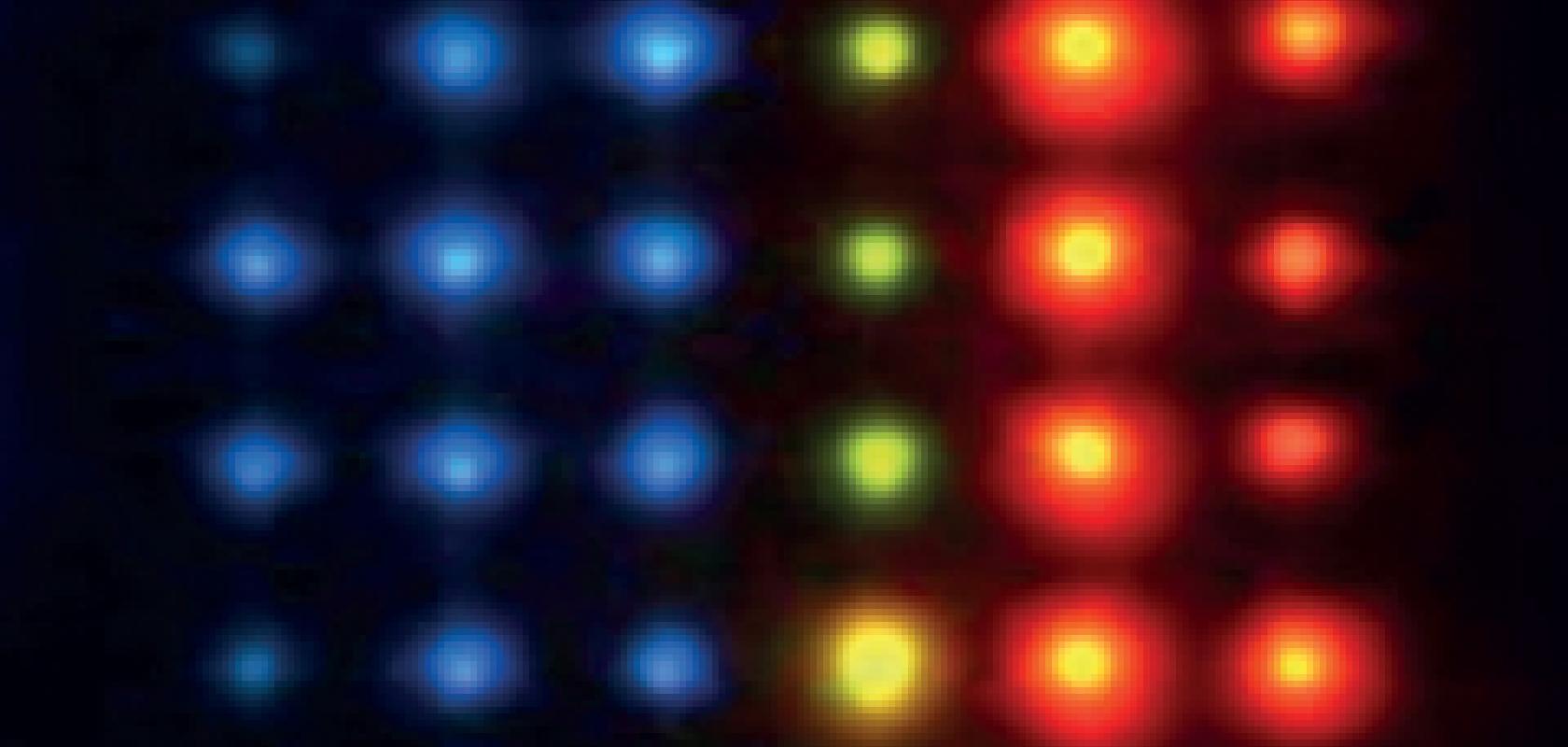A tuneable laser that can be built into a portable device for medical applications is the outcome of research at the University of Cambridge.
The key part of the patented laser technology that can be tuned from 450nm to 850nm is a 10µm thick liquid crystal cell that uses glass or plastic, and is no larger than a pixel from a flat screen display. Because of the wavelength range, the liquid crystal laser could be used for evaluating the skin using optical coherence tomography, which operates at 850nm, or evaluate biological samples using fluorescence techniques (using chemical tags that fluoresce under visible wavelengths). Other optical analysis techniques that this technology could be used for include Raman spectroscopy and flow cytometry.
The tiny tuneable laser is pumped by a fixed wavelength laser. Its energy excites laser dyes with which the liquid crystal is doped. The dyes give off photons whose wavelength is then controlled by the liquid crystal being in a chiral nematic phase. Nematic means the liquid crystal molecules are orientated in one direction, but yet are still able to flow like a liquid. Chiral means that due to intermolecular forces the liquid crystal molecules tend to align at a slight angle to one another. This molecular structure reflects some colours and transmits others. The Cambridge researchers also use a chiral dopant to help twist the orientation of the molecules. While the chiral structure is doped the liquid crystal does also self assemble.
One of the researchers, Dr Philip Hands explains: ‘Throw the three mixtures together and with the appropriate conditions in the cell…it spontaneously aligns into a chiral structure.’ He adds: ‘Certain beetles have a reflective metallic lustre to them. The green shell of a beatle, that colour comes from a chiral structure, at the nanoscale, on the shell surface that reflects green light, at 550nm, like a mirror would.’ So the liquid crystal acts like the mirrors of a laser resonance cavity.
The liquid crystal technology has been developed under the Cosmos Lasers project, which is taking place at Cambridge University, is funded by the UK government’s Engineering and Physical Science Research Council. Cosmos was funded from 2006 with a basic technology grant by the EPSRC and then in 2010 the Cosmos team were invited to apply for further funding. They were awarded two years of funding. Liquid crystal lasers were predicted to work back in the 1960s or 70s but, they were not realised until 1998. Hands says: ‘Liquid crystals was one of the areas of interest for this Cosmos project. Now we believe they have some commercial viability. They are no longer a research curiosity.’ Hands and his colleagues have built two demonstrators and are seeking biomedical industry partners to develop portable diagnostic equipment.
Designed to be small, the laser is expected to be cheap to manufacture, because the manufacturing process is akin to printing. Tuneable commercial lasers available at the moment are prohibitively expensive for many of the organisations, according to Hands. Of those available tuneable lasers, most are complex to operate, take up an entire room, and have fragile optical alignment, while others rely on the high-pressure streaming of liquid carcinogenic dyes and high-powered mains electricity supplies.
The laser currently fits in a small briefcase and Hands and his team hope that with further research the size can be reduced to a handheld device. Referred to as a point of care diagnostic system, the liquid crystal laser device could be taken to a patient’s bedside.
One application for this point of care diagnostic systems is malaria. Accurate medical diagnostics for diseases such as malaria often require laser-based spectroscopic or visible image analysis of thin microscopic samples. This requires the sample to be transported to a laboratory to be analysed for diagnosis. The drawback with this for malaria is that during the course of a week a malaria sufferer will progress from the early stages to the later stages, when the disease is harder to treat. With point of care diagnostics, malaria can be diagnosed and treated rapidly.
Another possible use is the simultaneous interrogation of a sample with multiple beams, each of which comprise a different wavelength. The liquid crystal laser is capable of multiple simultaneous emissions, both in one beam or two-dimensional arrays. The laser could be incorporated into a microscope-like device for the simultaneous analysis of biological samples that have been tagged with fluorescent markers. Another possible use outside the laboratory is holographic laser displays.


